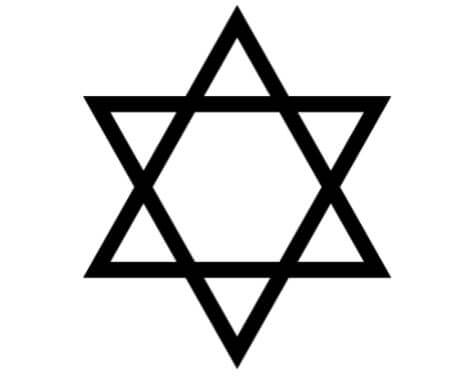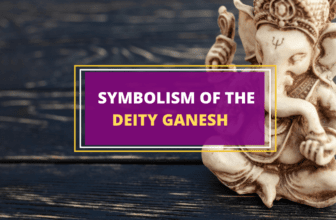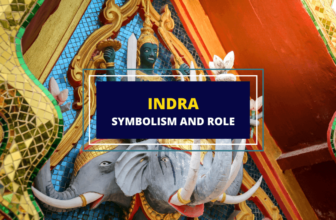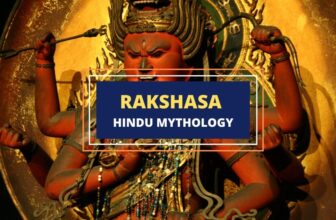
Table of Contents
Star symbols have been used as a magical sign or a decorative element in many civilizations around the world. A hexagram symbol used in Hindu yantra, the Shatkona is made from two interlocking triangles placed upon each other. Here’s what to know about its significance for the Hindus, along with its use as a yantra.
Meaning and Symbolism of Shatkona

Also spelled satkona, the shatkona is a Sanskrit term that means six-angled. The symbol is composed of two equilateral triangles that point in opposite directions, usually upwards and downwards. Stylistically, it’s identical to the Jewish Star of David, and the triangles can be shown intertwined with one another or as one. It’s one of the Hindu yantras—visual representation of mantras—used in worship.
The shatkona is part of the esoteric belief system of the Hindus. Here are some of its meanings:
1. Divine Union of Masculine and Feminine
In Hinduism, the shatkona symbolizes both the male and female form as a source of all creation. The upward pointing triangle represents the Hindu deity Shiva, while the downward pointing triangle symbolizes Shakti.
Shiva is the masculine side of god, while Shakti is the feminine personification of god. In Hindu symbolism, the upward pointing triangle is a symbolic representation of male organ, while the downward pointing triangle denotes the female womb.
For orthodox Hindus, the upper triangle symbolizes the cosmic qualities of their god, the Universe and the physical world. On the other hand, the lower triangle represents the states of a human soul: waking, dreaming and deep sleep.
What Are Yantras and How They Are Used?
The term yantra is derived from the root word yam that means to compel, to bend, or to restrain. It was used originally to refer to instruments or accessory appliances, but later became associated with magical diagrams and mystical designs. This is because of the connotation of the term yantra-nam as restraining, guarding or protecting. Therefore, they’re also seen as protective devices by many shamans and priests.
However, there are different types of yantras: yantras for magical purposes, yantras for actualizing divinities, and yantras that aid in meditation. Protective yantras are magical in intent, and thought to provide protection from a variety of dangers and ills. They’re the ones used by people as charms or talismans, in hopes of warding off evil and attracting peace and prosperity.
On the other hand, the shatkona is a deity-specific yantra, noting that each divinity has a yantra of his own. Compared to the magical yantra, it only serves as an icon meant for worship, and only used during certain rituals. In a worship ritual, a devotee would invoke the deity through an appropriate mantra and visualized yantra, in hopes of helping him in eliminating obstacles on his spiritual journey.
Lastly, the yantras of meditation are used for concentrating the mind and channeling consciousness. They’re generally referred to as mandalas, which are highly sophisticated and hold complex symbolism. Many yantras are mentioned in ancient and medieval works on alchemy, astronomy and architecture. More than that, patterns of several yantras have inspired modern Indian art, architecture, and even dance.
Wrapping Up
Yantras are a device for spiritual advancement used in worship rituals. The shatkona has a deep significance in Hindu worship, as it represents the divine union of the masculine and feminine, especially the deities Shiva and Shakti. It’s also thought to represent the deity that a devotee seeks to communicate with, in hopes of aiding one’s spiritual progress.








